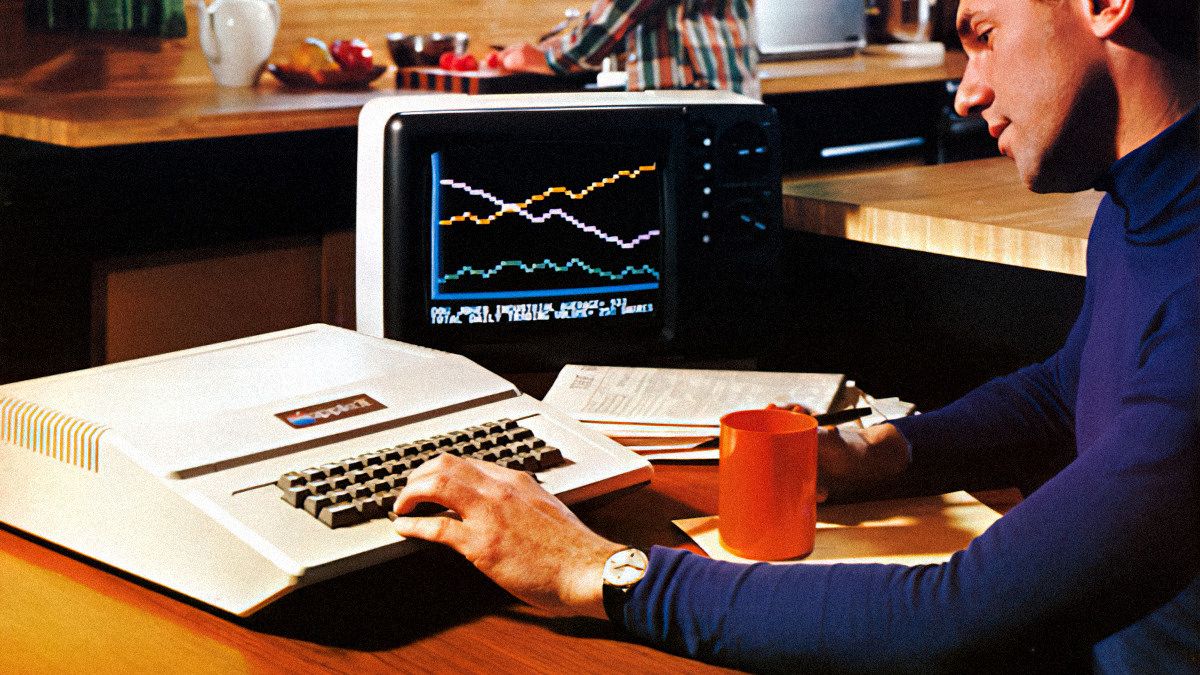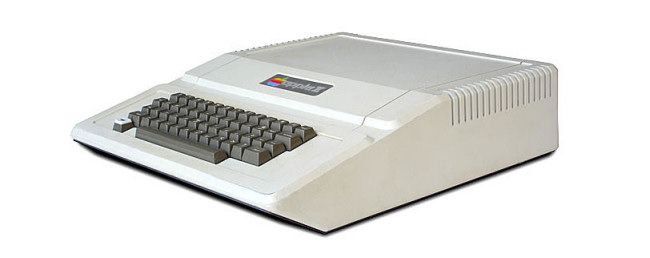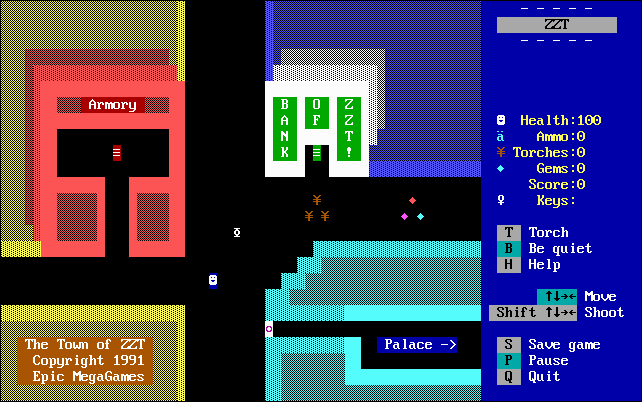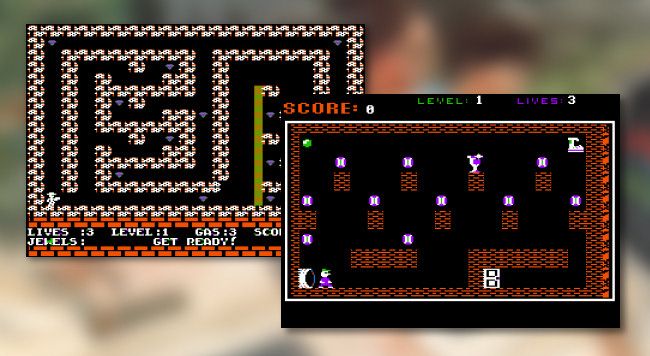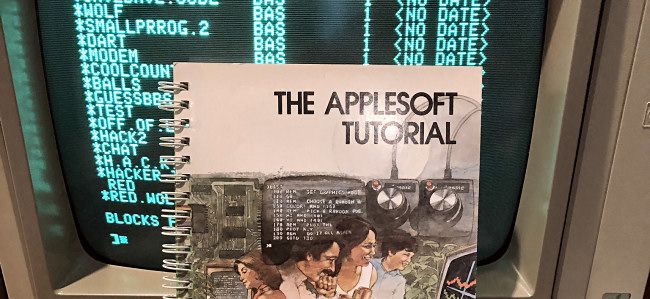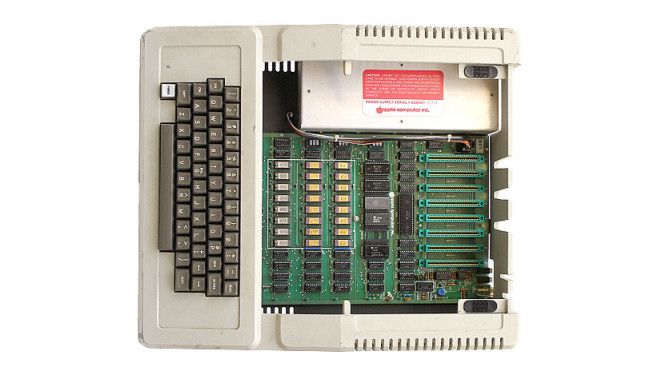Quick Links
45 years after the Apple II personal computer launched, the tech industry has arguably moved away from a few of the core principals that launched Apple and the personal computer into the mainstream. We spoke with industry luminaries Tim Sweeney, John Romero, and Steve Wozniak about what the Apple II did right---and what we can still learn from it today.
Apple II: A Computer For Everyone
Released in June 1977, the Apple II made waves as an easy-to-use computer aimed at average people. The original model included a MOS 6502 CPU running at 1 MHz, a 40x24 character text resolution, color graphics, composite video output, a cassette interface for storage, and eight internal expansion slots. It originally retailed in variable configurations ranging from $1298 with 4K RAM, up to $2638 for 48K RAM (that's about $6,223 to $12,647 adjusted to today's dollars).
In 1978, Apple released a 5.25" floppy disk drive for the Apple II that could store 143 KB per disk, and the launch of VisiCalc in 1979 made the Apple II an essential purchase for small businesses. It also gained a strong foothold in education thanks to efforts by Steve Jobs, and elementary school computer labs in the US were often full of Apple II computers, introducing them to a generation. Over time, Apple released at least 8 computer models in the Apple II series and continued to support it until 1993---for 16 years.
Like the Apple I before it, the Apple II notably integrated a "terminal" with a keyboard and video output directly into the computer itself, so there was no need for a separate teletype or CRT terminal interface. This made an entire Apple II system more compact and less expensive than other complete personal computer systems up to that point, although many PCs would soon follow the same integrated I/O formula.
How Legends Got Started
The Apple II has been famous since the 1970s, but a lot has changed in the tech industry since then. So we wondered: Is there anything the Apple II did well that computers have lost sight of recently? To get some answers, we spoke to Apple co-founder Steve Wozniak (whom we've interviewed separately). We also asked two legendary game developers who began their software development careers programming on the Apple II.
Tim Sweeney, the CEO of Epic Games, programmed apps and games on the Apple II before founding Epic in 1991. "My first Apple II was a gift from my brother Steve Sweeney, nominally to my Dad, but I was the real audience," says Sweeney. "Compared to the Commodore 64s and Ataris of the era, it was a pure computing device. No sprite acceleration, no graphics processor. You did everything yourself, and learned it all."
Similarly, Doom and Quake co-creator John Romero developed many Apple II games before co-founding id Software in 1991, making a name for himself in the field. "When my parents finally bought an Apple II+ for the house in April 1982," says Romero, "My life was permanently set on its course as I spent every waking moment, for years, learning everything I could about the computer and making dozens of games, many that were published."
Here are some things that they think the Apple II did right---and what we should be doing today. We corresponded via email, and their responses have been edited lightly for formatting.
"The Best Learning Tool in the World"
When it came to developing software on the Apple II, both John Romero and Tim Sweeney agree that Woz's machine made programming very easy and accessible. "The Apple II was so attractive because it was small, easy to program, and had incredibly easy access to memory," says Romero. "The monitor program allowed viewing and changing memory, so I really got to learn what a computer was like down at the byte-level. I could type machine code and assembly language into it and see the results. It was the best learning tool in the world."
With the Apple II, the instant you turned it on, you were ready to jump into programming. Tim Sweeney recalls the ease of getting straight into the action. "The Apple II booted to a BASIC prompt, and you could immediately write code," says Sweeney. "The manuals documented everything, even the machine language and ROM. Every kid with a computer from that era grew up a programmer, because it was right there and so easy."
With today's PCs and Macs, you face a lengthy boot process to start up initially, and then programming them is something of a mystery, obscured from the average user. A computer owner typically has to go out of their way with special knowledge to acquire the tools necessary for programming a modern machine. But with an Apple II, all that was built in, and it was simple enough for one person to grasp the entire system. "The Apple II is understandable," Steve Wozniak told us. "A single person can see into the Apple II design."
Romero sees the programmer-centric nature of the Apple II as a feature that is sorely missing today: "One of the best things about the Apple II was its accessibility for learning and programming. The immediate ability to code by just turning on the computer is unprecedented. You can't do that today. There are some great emulators or systems you can use today, like Pico8, that create a mini-console environment that makes it fun and easy to learn how to program, but nothing will equal the power of the Apple II---a state of the art machine that you could start coding within one second of turning it on."
Sweeney's take agrees with Romero, and he provided some potential solutions for today's machines: "[One thing lost today] is the role Apple II and other early computers played in teaching everyone to program, by booting up to the era's leading programming language," says Sweeney. "Windows should put a programming prompt one key press away. Fortnite should put a programming prompt one key press away and, in time, we will. We need to launch a new era where programming is easy, and everyone's a programmer again."
Some of this easy-programming philosophy lives on in the continued development of the Raspberry Pi project, which is over a decade old now. Its creator, Eben Upton, saw that programming skills were waning in modern college students, and he also wanted to allow easy access to hardware control like the classic 1980s machines. But the Raspberry Pi is the exception these days. You can't just instantly power up, say, an iPhone and start programming then share the result freely with the world. And that brings us to another point.
You Owned and Controlled It
Digital Rights Management (DRM) features prominently in today's computer-powered devices, from smartphones to tractors. It's a way that manufacturers can lock down a product so that unauthorized software cannot run on it, and it's the exact opposite of the open ethos carried by Steve Wozniak when he designed his early computers.
Similarly, some manufacturers such as Apple today have labored to make their products difficult to physically open and service by unauthorized, unlicensed personnel. These restrictions give some people the feeling that they don't really own the products they have bought, since they aren't free to use them (or even repair them) how they want.
In contrast, the Apple II included an open architecture that invited development of add-on hardware in the form of small plug-in cards. If you wanted in, you could just lift the lid on the top of the case. And Apple also allowed anyone to develop and distribute software for the Apple II. This openness created a large ecosystem around the machine fairly quickly, and it sustained the platform for 16 years.
This philosophy strongly informed the work of Tim Sweeney, who has built games with free and open editing tools since ZZT in 1991. "[The Apple II] was a wonderfully open and discoverable system defining the ethos of computers as tools working for the user," Sweeney says. "The history of companies from id Software to Epic Games begins with Apple II in the 1980s," says Sweeney. "We opened up our games and engines to users to modify and build on, as the Apple II opened up computing to us."
Some modern platforms, such as the iPhone, only allow licensed developers to create software for the platform. The iPhone also prevents owners from installing unlicensed software on their devices. This has led to criticism from industry veterans like Sweeney, whose company is in the middle of a battle for open platforms, including a recent lawsuit with Apple over fees in the App Store. "Woz showed that user freedom and company profits can coexist," says Sweeney. "We're losing that now, ironically, to a malevolent spirited evolution of Apple itself, and need to fight to preserve our rightful freedoms."
Whether Apple's current trajectory toward closed systems is truly malevolent or just a natural extension of wanting to make as much money as possible (which, to be fair, Epic wants as well) is a value judgment beyond the scope of this piece. But it's a fact that closed computer systems have allowed repressive governments to spy on and persecute their people, something that most Americans would probably agree is a bad thing. The Apple II's spirit of freedom and openness seems compatible with traditional American values of liberty in a way that isn't necessarily reflected in today's closed architectures and DRM-locked app stores.
When we asked Steve Wozniak (who was unaware of Sweeney's comments) what we can learn from the Apple II that modern platforms have forgotten, he gave a brief answer that emphasized openness on the Apple II: "You, the user, were in control yourself and owned it." The open ethos is as important to him today as it was in 1977 when he designed the Apple II. And as more aspects of society depend on services locked down with DRM, following the spirit of Woz may ensure that America stays free and open well into the future.

